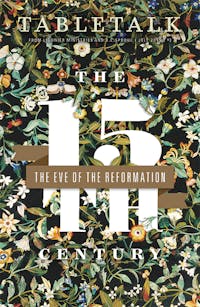
Request your free, three-month trial to Tabletalk magazine. You’ll receive the print issue monthly and gain immediate digital access to decades of archives. This trial is risk-free. No credit card required.
Try Tabletalk NowAlready receive Tabletalk magazine every month?
Verify your email address to gain unlimited access.
In 1492, Ferdinand and Isabella of Spain sponsored Christopher Columbus and his voyage to the New World. But in 1477, they were behind something far more infamous. In that year, the Spanish monarchs petitioned Pope Sixtus IV to revive the Inquisition, targeting Muslims and Jews. So began the reign of terror known as the Spanish Inquisition.
The Spanish Inquisition occurred in the larger enterprise of ecclesial and secular courts imposing conformity to the Roman Catholic Church and stamping out all dissent. Rome sponsored inquisitions as early as the eleventh century. But the Spanish Inquisition was unique. First, it was controlled by the monarchy, rather than the papacy, and would be even more politically motivated than other inquisitions.
The Spanish Inquisition was also unique in regard to its setting in Spain. For centuries, Muslims ruled the Iberian Peninsula; it was not until 1250 that Catholics reconquered the area. And even afterward, many Muslims remained, and large Jewish populations also dotted Spain. Popular persecution broke out against these Spanish Jews and Muslims, forcing them to convert to Catholicism and be baptized or be killed. Thousands converted under duress and were known as conversos. The Inquisition later targeted the conversos, seeking to determine whether their conversions were genuine or whether they continued to practice their old faith, a crime punishable by death. Principled Jews and Muslims either fled or faced the savagery of the Inquisition.
This leads to the third characteristic marking the uniqueness of the Spanish Inquisition: it rose to ghastly levels of persecution. It is well known for its use of torture to extract confessions and for the auto-da-fé (act of faith), a ritualized act of public penance that concluded with the execution of the accused. The violence would continue into the next century and beyond, but it would reach its zenith during the Reformation.
After 1516, the Spanish Inquisition had a new target: those who were protesting the Roman Catholic Church. As Luther’s ideas gained a foothold in Catholic lands, the Inquisition gained power. The Spanish Inquisition followed one singular, guiding principle: error must be eliminated. Of course, it defined error as any opposition to the Roman Catholic Church. To rout any such error, the Inquisition stopped at no boundary. Furthermore, no person was off limits. Priests, nuns, bishops, and even secular authorities had to submit to its rulings.
Then, during the 1540s, Rome attempted to push back against the Reformation. The first measure was the formation of the Jesuits by Ignatius of Loyola in 1540. The second measure was the Council of Trent, first convened in 1545 and meeting intermittently through 1563. Its decrees enshrined the anti-Reformation stance of Rome. The third and by far the most vicious of these measures, the Inquisition, escalated in its intensity in 1542. That year, Pope Paul III issued the papal bull Licet ab initio (Allowed from the beginning), which gave six cardinals absolute authority to extend the Inquisition.
One of these cardinals became Pope Paul IV; he issued the first dreaded Index of Prohibited Books in 1559. The list of banned books included the works of the Reformers, as well as Bibles in vernacular languages. Those caught with a copy of the Bible in German or English or French would be brought before the Inquisition, imprisoned, and given a show trial. Upon being found guilty, they would be tortured or martyred or both.
Inquisitors chased after Protestants in Italy and parts of Germany. As the Huguenots grew in France, they, too, came under the authority of the Inquisition. Nicholas Burton, a merchant, was one of Inquisition’s victims. Burton’s jailers moved him to solitary confinement because he so boldly and persuasively spoke of the gospel. Before they burned him at the stake, Inquisition officials removed his tongue to silence his testimony before the gathered crowd at his martyrdom. The Inquisition’s records overflow with accounts of those who “said and performed things of the savour of the heretic Luther.” In 1635, one man was brought before the Inquisition because he enjoyed a meal of bacon and onions on the fast day of St. Bartholomew. As an irony of history, in 1527 the Inquisition even jailed Ignatius of Loyola, the founder of the Jesuits. The inquisitors entirely misunderstood some statements he had made. The Inquisition ran on suspicion and even at times pure ignorance. Often, the Inquisition overplayed its hand, and it eventually became its own worst enemy. As the secular authorities grew in power in the sixteenth century, they slowly dismantled the power of the Inquisition, until it was finally abolished in 1834.
The Inquisition stopped at nothing in its attempts to put out the flame ignited by the Reformation, but in the end, it failed in its mission to eliminate “error.” While the Reformation has left a remarkable legacy, the Spanish Inquisition has become a byword. Of Pope Paul III, Luther said, “Let the Papists hold consultations and consider their treacheries. Christ lives.”
